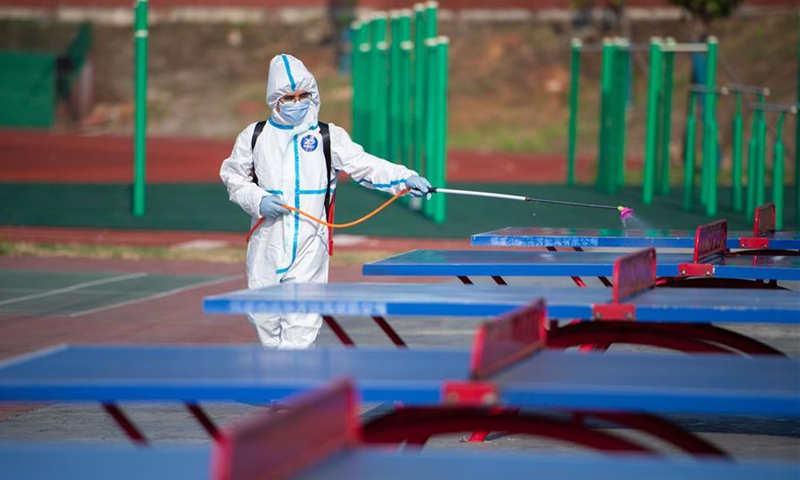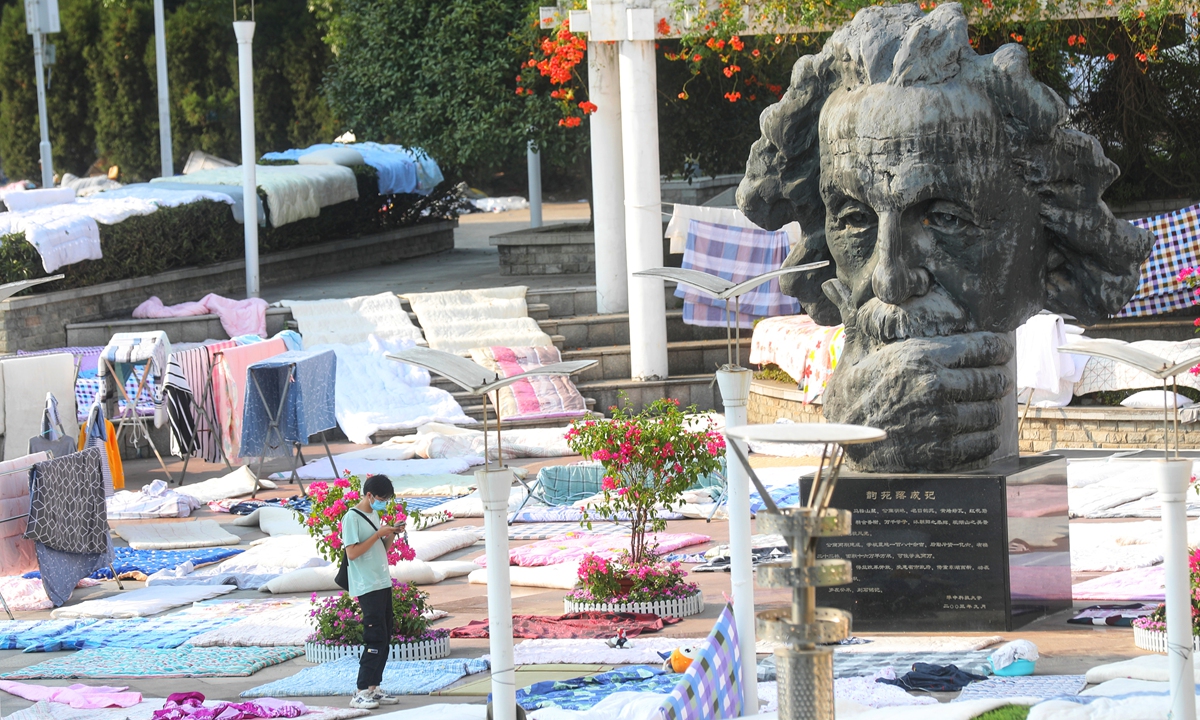High vigilance as schools fully return 8 months since epidemic
By Zhang Hui, Chen Shasha and Fan Anqi Source: Global Times Published: 2020/8/31 19:56:33
Schools nationwide to reopen; so far zero infection

Photo: Xinhua
Eight months after the COVID-19 pandemic first hit China, schools from kindergartens to colleges are finally headed toward a full resumption in the fall semester. While students are excited to meet their classmates and teachers again, society faces a big test in epidemic prevention and control.
Parents and students interviewed by the Global Times said they were confident in Chinese schools' strict epidemic prevention and control measures in preventing large-scale infections amid a spike in cases at US universities. Medical experts said Chinese schools are unlikely to see such spikes, but schools need to remain vigilant due to the possibility of local sporadic cases and pressure from imported cases.
Many cities in China set different school resumption days for different grades to avoid large gatherings. In Beijing, about 590,000 students in six grades involving primary and middle schools resumed class on Saturday, and 400,000 more students were scheduled to resume school on Tuesday. Another 520,000 students will return to school on September 7.

As students at the Huazhong University of Science and Technology in Wuhan, Central China's Hubei Province, return to campus, the first thing they do is put their quilts out to air, as shown in the photo taken on Monday. The students were away from campus for eight months due to the COVID-19 epidemic. Photo: Cui Meng/GT
Nearly 1.4 million students in Wuhan are set to return to school on Tuesday in 2,842 middle and primary schools and kindergartens.
On the first day, primary school students and their parents have to take their temperatures to enter the schools, and parents leave from other exits.
A mother of a primary school student surnamed Xu told the Global Times on Monday that schools told parents to report students' temperatures every day. Students must wear masks all day and schools must conduct regular disinfection.
School management was so careful that it prepared disposable lunch boxes for students who usually brought their own packed meals to avoid gatherings of students for washing the boxes, Xu said.
Many schools will continue the measures they took during the spring term, such as separating students as they have lunch, reducing the number of students in one classroom and setting up one-meter signs in cafeterias.
Some parents said they hoped that parents and schools could take regular temperature reporting and other measures seriously, not in a perfunctory way.
Aside from taking regular prevention measures, many schools invited frontline doctors and nurses who fought the COVID-19 epidemic on their opening day to teach students to improve personal health and respect these frontline workers.
Students in different grades at the Shanghai-based Tianyuan Foreign Language Primary School will hold a DIY activity on the first school day to make paper caps, outfits and masks for medical staff, and the school will invite a mother of twin students, a nurse who fought COVID-19 at Leishenshan hospital in Wuhan when the city was plagued by COVID-19, to share stories with students, Zhao Yingqun, the school's principal, told the Global Times on Monday.
"With these activities, we hope to inspire our students to be aware of the contributions and sacrifices made by medical workers, and express our gratitude and respect for them," Zhao said.
Chinese universities, most of which gradually resumed autumn semester courses in mid-August, have adopted strict COVID-19 measures, such as partially closed management, nucleic acid testing, banning gatherings, and strict identification systems.
Song Yiran, a student from Lanzhou University in Northwest China's Gansu Province, told the Global Times on Monday that partially closed management in universities could greatly reduce the risks of being infected through outdoor activity.
Under partially closed management, students can apply for permission to go out to meet relatives or have job interviews, and the university also made students' enclosed lives easier by allowing food deliveries and other services in schools, Song said.
A campus is a high-risk area. The consequences will be disastrous if someone gets infected outside and then returns to the campus to use the cafeteria, public bathing rooms or classrooms, she said.
With Chinese schools welcoming the return of students, some universities in the US have switched back to online courses after an increasing number of confirmed cases involving students were reported since schools reopened in mid-August.
Since classes started on August 19, for example, 1,200 students at the University of Alabama have tested positive for the virus. Across the US, 36 states have reported a total of 8,700 COVID-19 cases at colleges and universities, CNN reported.
Wang Guangfa, a respiratory expert at Peking University First Hospital, told the Global Times that the US reopened its universities when local infections had not been put under control, which resulted in the spikes at universities. What happened in US universities is unlikely to occur in Chinese schools as China has accumulated rich preventive measures and built a strong epidemic monitoring system. But China should be on alert for imported cases and risks of infection through imported frozen seafood, Wang said.
Chinese schools initially resumed classes for the spring term in May. Before the summer vacation, 75 percent of the nation's 280 million students had returned to school, and Chinese schools maintained zero infections during the two-month period.
RELATED ARTICLES:
Posted in: SOCIETY